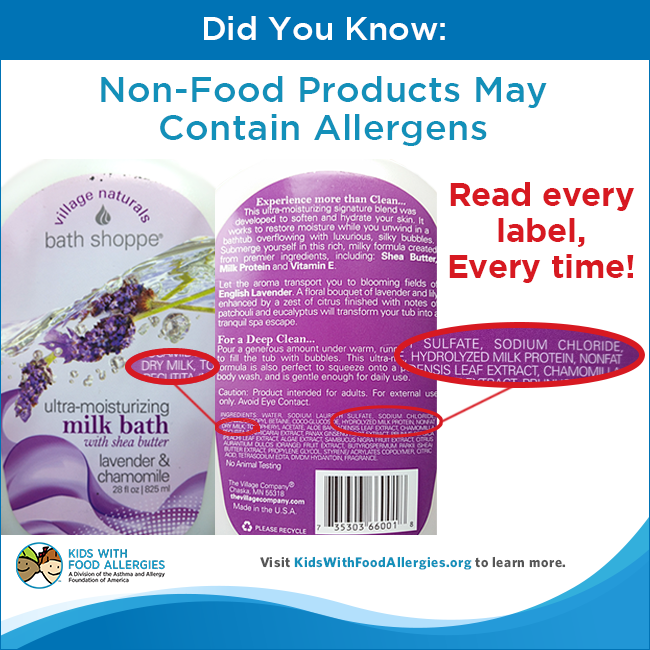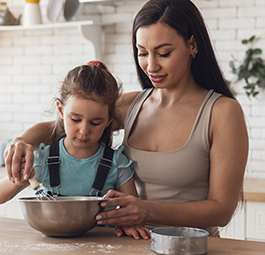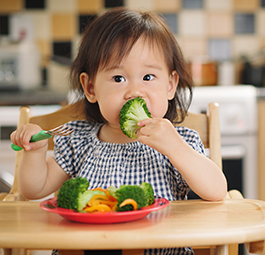Food Allergens May Hide in Non-Food Items
Foods that cause allergic reactions are called allergens.
Even a tiny amount of an allergen can cause a reaction. Allergic reactions usually occur after your child eats a food that she or he is allergic to. But kids can get exposed in less obvious ways. For example, handling their allergens and then rubbing their eyes, nose or mouth. Young babies may chew on unsafe toys. Pets may eat allergens and then lick your child on the face. There are many non-food items in your home that are also potential sources of allergens. Watch out for:
Play Dough:
Store-bought “play dough” contains wheat. If your child is allergic to wheat, you can make a wheat-free homemade version. Some online retailers offer wheat-free/gluten-free play dough. Other craft supplies may contain allergens as well. Refer to KFA’s list of potential allergens in preschool and school crafts for a full list.
Bird Feeders:
If you keep a bird feeder in your yard, check the ingredients of the bird seed. Many bird seed products contain peanuts, nuts, wheat, and milk products – plus, of course, seeds.
Stuffed Toys:
Crushed or ground nut shells are sometimes used as stuffing material in bean bags, stuffed animals, “door draft blockers”, and other such items. If your child is allergic to peanuts or tree nuts, buy toys and other items that use polyester fiberfill or other synthetic stuffing.
Pet Food:
Many pet foods contain ingredients to which your child may be allergic. Watch out for this in your home, and when visiting other people’s homes. Some examples are:
-Shrimp in fish food flakes
-Eggs or fish in cat kibble
-Casein (milk) in bone treats
-Peanut butter inside dog chew toys
Children can come into contact with pet food through contact with a pet, from a pet licking a child, or from handling the food itself.
Be sure to read ingredient labels on pet food, treats and chew toys to make sure they are safe in case your child comes in contact with them. Look for voluntary warnings on pet food packaging. Some products will contain advisory statements. Pets can have food allergies, too, so it is possible to find “hypoallergenic” products for them that may also be free of your child’s allergens.
Anything You Give to Your Baby or Toddler:
If your child is a baby or toddler, be especially careful of anything that you give to her to hold or play with. Babies and toddlers put everything into their mouths. Anything given to them must be completely safe and free of food allergen residue.
Personal Care Items:
Ingredients derived from food are often added to creams, cosmetics, hair care products and other personal care items. Be sure to read the labels and check for the presence of your child’s allergens.



Teal Classroom:
Food Allergy Awareness Kit








